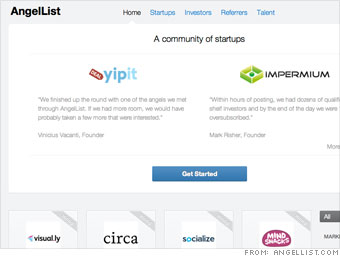
Of course, that quarter was followed by a quick recovery and then an investment frenzy, but this time feels different.

“At the time, that was the worst quarter for venture since we started tracking in 2016. “Surprisingly, by volume and tenor venture activity in Q4 was nearly identical to the second quarter of 2020, when COVID first hit startups and everyone was panicking,” Abe Othman, head of data science at AngelList and report co-author, wrote in an email.

Even seed round valuations began to fall by the fourth quarter.
Angel list stack series#
But many investors, armed with billions in dry powder, instead shifted their attention to early stages, helping buoy valuations at seed, Series A, and Series B.ĪngelList’s data shows cracks in those early-stage valuations emerged in the second half of 2022. Much of the data is specific to startup activity on AngelList’s platform, but AngelList touches a wide range of startups, particularly at the early stages.įor much of 2022, the narrative has been that the tech IPO market and late-stage growth rounds were essentially frozen. “In 3Q22, turbulence in the broader market trickled down to the early-stage market in a major way, with deal volume and positive activity dropping to levels not seen since the onset of the pandemic,” the report states. They also gave me permission to publish their findings. Contact us to confirm if you qualify.AngelList and Silicon Valley Bank shared their annual report on the state of early-stage startups and venture capital with Newcomer in advance of the report’s publication today. Canadian investors can invest when specific criteria are met (the criteria are at the company level). Company JurisdictionĪnyone except residents or citizens of Canada. Additionally, international investors must pass local and US KYC & Accreditation requirements. If your RUV is investing into a company that is incorporated outside of the US, residents and citizens of that country cannot invest in your RUV. Any amount over $40k, whether it meets the allocation written on the RUV deal page or not, can close. RUVs must raise a minimum of $40k in order to close. Is there a minimum amount that I can raise? We also usually reserve 3 spots in case an LP needs to split their investment (due to divorce, death, etc.), so the practical limits are 247 and 96 LPs, respectively. Raising from just one investor would not make it a pooled vehicle.


Companies incorporated outside the US, Canada, Cayman Islands, and Singapore.What type of company cannot be supported by an RUV? Company JurisdictionĪnyone except residents or citizens of that countryĪnyone (except Canadian investors) Canadian investors when specific criteria are met Additionally, all investors must pass their local and US KYC & Accreditation requirements. If your RUV is investing into a company that is incorporated outside the US, residents and citizens of that country cannot invest in your RUV. For companies incorporated outside of the US: Most private venture backed companies incorporated in the US, Canada, Cayman Islands, or Singapore. When you submit a new RUV, our team reviews these parameters to ensure fit. There are certain regulatory, compliance, and operational limitations that define what type of investment we can support. Do not worry if it looks like you see the same minimum no matter how many links you create.


 0 kommentar(er)
0 kommentar(er)
